The Imaging Resource
Quick Review
Kodak EasyShare C360 Digital Camera
| Camera QuickLook | ||
| Review Date |
|
|
| User Level |
|
|
| Product Uses |
|
|
| digital camera Design |
|
|
| Picture Quality |
Very Good, 5.0-megapixel CCD | |
| Print Sizes |
11x14s or 8x10s with some cropping | |
| Availability |
Now | |
| Suggested Retail Price (at introduction) |
|
|
|
||||||||||
The Kodak EasyShare C360 is the latest in a long line of digital cameras that really earn the word "easy" in their name. The entire line of EasyShare digital cameras are among the easiest and most goof-proof out there, and the Kodak C360 holds true to its roots. A very compact 5-megapixel, 3x-zoom model, the Kodak C360 also mates with Kodak's popular "Printer Docks," offering one-button printing of high-quality photos. The Kodak C360 follows the recent, more stylish EasyShare design theme, with a trim shape, brushed-metal panels, and generally cleaner lines. An entry-level digital camera, with a primary focus on ease of use, a Kodak C360 and accompanying Printer Dock could make a good choice for a "family" camera, to be used by both parents and kids. Read on for all the details...
Keeping ease of use and compact portability at the forefront of its design, the new Kodak EasyShare C360 continues the EasyShare digital camera tradition. Aimed at point-and-shoot oriented consumers, the Kodak C360 is small, pocket-friendly, and offers a wide range of preset Scene shooting modes for great results in a variety of common, yet sometimes difficult, shooting environments. Compact and very light weight, the C360 measures only 4.0 x 2.1 x 1.5 inches (102 x 65 x 38 millimeters), without the lens extended, and weighs only 7.2 ounces (203 grams) with the batteries and memory card loaded. The Kodak C360 is small enough to squeeze into many shirt pockets and small purses, and comes with a wrist strap for added security when shooting. Its compact design includes a retractable lens, protected by an automatic, shutter-like lens cover that retracts whenever the camera is powered on. The 5.0-megapixel CCD captures high resolution, print quality images (up to 11x17 inches with acceptable detail, or 8x10 with some cropping), as well as smaller image sizes better suited for distributing via e-mail.
The Kodak C360 offers a fairly standard 3x zoom lens, equivalent to a 34-102 mm zoom on a 35mm camera. (That's a moderate wide angle to a moderate telephoto.) The camera's autofocus mechanism uses a multi-zone system to "find" the primary subject closest to the lens. The AF area is marked in the LCD display with a set of brackets. You can also change the AF area to read only the center of the frame, through the Record menu. Also available through the Record menu are Single and Continuous AF modes, the Continuous option helping you maintain focus on a moving subject. The C360 has a maximum aperture ranging from f/2.7 to f/5.2, depending on the zoom position. Focus ranges from 24 inches (60 centimeters) to infinity in normal mode, with a Macro mode getting as close as 2.0 inches (12 centimeters). (The minimum Macro focus distance depends on the zoom setting.) A Landscape focus mode fixes focus at infinity, for distant subjects and scenery. In addition to the 3x optical zoom, the Kodak C360 also offers as much as 5x digital zoom, which effectively increases the camera's zoom range to a total of 15x. Keep in mind though, that digital zoom decreases the overall image quality, since it just stretches the center pixels of the CCD image. For composing images, the C360 offers both a real-image optical viewfinder as well as a 2.0-inch color LCD monitor.
The Kodak C360 offers automatic exposure control, as well as a range of preset Scene exposure modes. Though you can't adjust the aperture and shutter speed directly, the camera does report its chosen settings on the LCD monitor's information display. (Handy for developing a sense of when to watch out for camera shake due to slow exposures, or when the camera is using a high enough shutter speed to freeze fast motion.) The Mode dial on top of the camera offers options of Movie, Close-up, Landscape, Sports, Portrait, Scene, and Auto exposure modes. Portrait mode is best for individual portraits, capturing a well-focused subject in front of a slightly blurred background. Sports mode is best for fast-paced action, employing a faster shutter speed to freeze action shots. Landscape mode fixes the focus at infinity, and captures broad vistas of scenery, while Close-up mode enables the camera's macro lens setting for small subjects. The Scene exposure mode offers no less than 12 preset shooting modes, including Children, Party, Beach, Snow, Fireworks, Flower, Self-Portrait (for pointing the camera back at you), Backlight, Night Portrait, Night Landscape, Manner/Museum (for indoor settings without flash), and Text.
The Kodak C360 employs a Multi-Pattern metering system, which bases the exposure on several light readings taken throughout the frame. Also available are Center-Weighted and Center-Spot modes. You can increase or decrease the overall exposure from -2 to +2 exposure equivalents (EV) in one-half-step increments. If you don't agree with the camera's exposure, or are uncertain of the outcome, you can enable the camera's Auto Exposure Bracketing mode, which takes a series of three images at different exposures. You can set the exposure variable through the Record menu, to 0.3, 0.7, or 1.0 EV step sizes. Also available through the Record menu is a Long Exposure mode, which extends the shutter times to eight seconds. White balance options include Auto, Daylight, Open Shade, Tungsten, and Fluorescent settings, which take advantage of Kodak's proprietary Color Science technology to achieve an accurate color balance under most lighting. An ISO setting offers equivalent settings of 80, 100, 200, 400, and 800 (with the 800 setting only available at the Good picture quality setting). An Auto setting is also available. The C360 also offers Black and White and Sepia color modes, and High, Natural, and Low color saturation settings. You can also adjust the in-camera sharpening. The built-in pop-up flash is effective from two to 11.8 feet (0.6 to 3.6 meters) depending on the setting of the zoom lens, and features Auto, Fill, Red-Eye Reduction, and Off operating modes. A two- or 10-second Self-Timer mode provides a delay between the time the Shutter button is pressed and when the shutter actually opens, so you can get into your own shots.
In addition to its still photography modes, the C360 also offers a Movie recording mode for capturing moving images with sound. Recording stops and starts with a brief, full press of the Shutter button, but if you hold the button down for more than a second or two, the camera will automatically stop recording when you let it back up again. As you record, the duration of the movie appears in a running counter on the LCD monitor. Maximum movie lengths depend on the amount of memory space available. You can also set the video length time to 5, 15, or 30 seconds through the Record menu, or set it to Continuous. (The 32 megabytes of internal memory will let you record movies up to three minutes and 23 seconds in length.) Movies can be recorded at 320 x 240 or 640 x 480 pixels, at 24 frames-per-second. A Burst photography mode lets you capture as many as five frames in rapid succession (approximately 2.4 frames per second) while you hold down the Shutter button, with First and Last settings. First saves the first five images taken, while Last saves only the last four in the series. The five-frame maximum number applies regardless of resolution, but may be hindered depending on how much available space is on the memory card or internal memory.
The C360 is compatible with Kodak's EasyShare camera and printer docks, and is packaged with a plastic insert to help seat it into the dock securely. The optional docks make life quite easy for downloading and printing images. You simply put the camera into the dock, and then download and/or print. The dock station also serves as an AC adapter and in-camera battery charger. Built into the Kodak C360 is 32 megabytes of internal memory, but the camera also features an SD/MMC memory card slot so you can expand the camera's memory capacity. I highly recommend picking up at least a 64-megabyte card right away, given the camera's 2,576 x 1,932-pixel maximum resolution size, though cards are available as large as 512 megabytes. For power, the C360 uses either a Kodak NiMH battery pack, two AA-type batteries, a single CR-V3 battery, or the optional AC adapter. Click here to read my "battery shootout" page to see which batteries currently on the market are best, or here for my review of the Maha C-204W charger, my current favorite. Also packaged with the Kodak C360 are USB and AV cables, as well as a software CD loaded with the (excellent) EasyShare software for downloading and managing images.
Basic Features
- 5.0-megapixel CCD delivering images as large as 2,576 x 1,932 pixels.
- Real-image optical viewfinder.
- 2.0-inch color LCD monitor.
- 3x, 34-102mm (35mm equivalent) lens.
- 5x digital zoom.
- Auto, Portrait, Sport, Landscape, and Close-up shooting modes, plus 12 additional preset Scene modes.
- White Balance with five settings.
- Maximum aperture of f/2.8 to f/5.2, depending on lens zoom position.
- Shutter speeds from 1/1,400 to eight seconds, depending on exposure mode.
- Built-in flash with four modes.
- 32MB internal memory.
- SD/MMC card storage (optional, card not included).
- Power supplied by one Kodak EasyShare NiMH rechargeable battery pack, one CRV3 battery, two AA type batteries, or optional AC adapter.
- Compatible with Kodak EasyShare Picture and Printer docks (plastic dock insert included).
- Kodak EasyShare software included for both Windows and Mac platforms.
Special Features
- Movie mode (with sound).
- Burst photography mode.
- Auto Exposure Bracketing mode.
- Black and White and Sepia color modes, as well as three color settings.
- Adjustable ISO from 80 to 800, with an Auto setting. (Auto varies from 80-160 as dictated by the lighting conditions.)
- Two- or 10-second Self-Timer for delayed shutter release.
- Image sharpness adjustment.
- Two AF area modes, plus Single and Continuous AF modes.
- Macro (close-up) lens setting.
- DPOF (Digital Print Order Format) and PictBridge compatibility.
- USB cable for connection to a computer (driver software included).
Recommendation
Like the rest of Kodak's EasyShare line, the C360 boasts a simple-to-understand user interface that keeps the fun in point-and-shoot digital photography. The Kodak C360's range of preset exposure modes help you get good-looking shots in just about any situation. The C360's point-and-shoot setup and compact, portable body make it an easy choice for travelers. Like Kodak's other EasyShare cameras, when combined with the accessory camera dock, the Kodak C360 ranks among the easiest to use digital cameras I've seen, avoiding much of the hassle involved with printing photos through a computer. Its lens isn't quite as sharp as those on higher-end EasyShare models like the V550, but given its entry-level price and attractive styling, the Kodak C360 could make a good choice for a family on a budget.
Compact and pocket-friendly, the Kodak C360 measures 4.0 x 2.1 x 1.5 inches (102 x 65 x 38 millimeters), small enough to fit into most shirt pockets and small purses. The C360 is light weight as well, at just 7.2 ounces (203 grams) with batteries and memory card. A wrist strap comes with the camera for added security when shooting, but I'd recommend a soft carrying case for travel.
The telescoping lens takes up the right side of the camera's front panel, surrounded by a thick, plastic lip. The lens extends outward when the camera is powered on, and likewise retracts when the camera is turned off. An automatic, shutter-like lens cover slides out of the way whenever the camera is powered on, and automatically closes to cover the lens when the camera is switched off. Also on the front panel are the viewfinder window, flash, light sensor, AF assist / self-timer lamp, and microphone. A moderate handgrip provides a good hold, compliments of the camera's battery compartment.
On the right side of the camera (as viewed from the rear) is the SD/MMC memory card compartment, beneath a hinged, plastic door. Opening the door reveals the actual card slot, as well as the USB/AV Out shared connector jack. Directly above the compartment is the eyelet for attaching the wrist strap.
The opposite side of the camera features the DC In jack (uncovered).
On the camera's top panel are the Drive button, Flash button, Power/Mode dial, and the Shutter button.
The rest of the camera controls are on the rear panel, along with the real-image optical viewfinder and 2.0-inch LCD monitor. A series of raised bumps serves as a thumb rest on the right side, reinforcing the front handgrip. In the top right corner is the Zoom lever, which controls optical and digital zoom. Directly left are the camera's speaker and the Share button. Lining the right side of the LCD monitor are the Delete, Information/Display, Menu, and Review buttons. The multi-controller in the lower right of the rear panel navigates through menu settings, and confirms selections when the center OK button is pressed.
On the bottom panel of the Kodak C360 are the tripod mount, dock jack, and battery compartment. The plastic, threaded tripod mount is just off-center from the lens and too close to the battery compartment for quick battery changes while working with a tripod. The battery compartment features a locking, hinged door, which slides forward to open. The dock connection jack connects the camera directly to the EasyShare dock for quick image downloading.
As I've come to expect from Kodak's EasyShare digital camera line, the C360 has a very user-friendly interface. The full range of preset exposure modes gives users a lot of flexibility in difficult yet common shooting conditions. The LCD menu system is short and simple to navigate, and the plain-English descriptions of menu items are a welcome change from the too-common cryptic icons on so many other cameras. A Mode dial lets you change camera modes quickly, and once again, plain-English descriptions flashed on the LCD screen make operation straightforward for even rank beginners. Given the simple interface and limited controls, you should be able to snap images right away, with hardly a glance at the manual.
Record-Mode Display
The Kodak C360's LCD display shows the center autofocus area along with currently-selected options for image size/quality, macro and flash mode, the number of images of the current size and quality that can be stored in the remaining space on the memory card. Half-pressing the Shutter button displays the chosen aperture and shutter speed settings. Pressing the Information button once in a record mode cancels the information display, while a second press disables the LCD entirely. A third press brings back both displays. Through the Setup menu, you can disable the "Liveview" function, which eliminates the LCD's viewfinder function.
Playback-Mode Display
In Playback mode, you can use the Kodak C360's Zoom lever to zoom in or out on an image, with a maximum enlargement of 8x. A thumbnail display of the images on the card is also available, through the camera's Playback menu. The Display button offers a more detailed information display, reporting the set exposure variables for the current image. The normal Playback display reports the image number, and any shared settings information. You can also disable the information overlay entirely.
External Controls
Power/Mode Dial: On the right side of the camera's top panel, this notched dial places the camera into Favorites, Auto, Scene, Portrait, Sports, Landscape, Close-up, or Movie modes.
Shutter Button (see image above): In the center of the Power/Mode dial, this button sets focus and exposure when halfway pressed, and fires the shutter when fully pressed. In Playback mode, pressing this button returns the camera to the selected Record mode.
Flash Button: To the left of the Power/Mode dial, this button cycles through the Auto, Fill, Red-Eye Reduction, and Off flash modes.
Drive Button: Directly left of the Flash button, this button cycles through the First Burst, Last Burst, and the two-and 10-second Self-Timer drive settings, before returning to the normal single-shot mode.
Zoom Lever: Tucked in the upper right corner of the camera's rear panel, this lever controls the optical and digital zoom in any record mode. In Playback mode, the lever controls the amount of digital enlargement applied to captured images, to a maximum of 8x.
Share Button: Located between the optical viewfinder and speaker, this button lets you tag images for printing, emailing, or as a favorite image. (A heart icon appears on "favorite" images.) Pressing this button automatically displays the Share menu with the following options:
- Print: Designates the number of copies of the current image to be printed.
- E-Mail: E-mails a low-resolution copy of the image to a recipient, based on a saved address book.
- Favorite: Marks the current image as a "favorite."
- Print All: Prints one copy of each image on the memory card or internal memory.
- Cancel Prints: Cancels a print order.
Delete Button: Adjacent to the top right corner of the LCD monitor, this button calls up the Delete menu in Review mode. You can delete individual images or all images on the card. There's also an option to cancel.
Information/Display Button: Below the Delete button, this button controls the information and image displays on the LCD monitor.
Menu Button: Next to the lower right corner of the LCD monitor, this button displays the settings menu in Playback or Record modes.
Review Button: Directly below the Menu button, this button activates Playback mode when pressed in any record mode. Once in Playback mode, pressing the button again, or the Shutter button, returns to the Record display.
Four-Way Multi-Controller and OK Button: Located in the lower right portion of the rear panel, this four-way controller navigates through menu options in any settings menu. Pressing the center OK button confirms menu selections. Pressing the right and left directionals in any Record mode adjusts the exposure compensation setting.
In Playback mode, the controller scrolls through captured images, when moved left and right. Pressing the down directional enables an index display. For captured movie files, pressing the OK button begins playback. During movie playback, moving the controller up and down adjusts the playback volume.
Camera Modes and Menus
Favorites Mode: An album icon with a heart on its cover indicates this mode on the Power/Mode switch on top of the camera. In this mode, any images that have been designated as "favorites" are displayed. (Favorites are selected in the EasyShare software. Once selected, they are shrunk to a size suitable for making 4x6 prints, and downloaded back to the camera's internal memory. This lets you carry a larger number of your favorite photos on the camera, without using up a lot of memory card space.)
Auto Mode: Marked with a green camera icon and the word "Auto," this mode is best for most average shooting conditions. Exposure is automatically controlled, but a small selection of user options is available through the Record menu.
Scene Mode: The letters "SCN" indicate this mode on the Mode dial, which offers 12 preset shooting modes. Available "scenes" are Children, Party, Beach, Flower, Fireworks, Snow, Backlight, Night Portrait, Night Landscape, Manner/Museum, Text, and Self-Portrait.
Portrait Mode: The traditional portrait symbol (a woman's head) marks this mode on the Mode dial. The camera uses a larger aperture setting to capture a sharp subject in front of a blurred background.
Sports Mode: This mode is indicated by a figure in action on the Mode dial. Here, the camera employs a faster shutter speed to "freeze" moving subjects.
Landscape Mode: An icon of two mountains indicates this mode on the Mode dial. In Landscape mode, the camera captures a well-focused foreground and background, perfect for wide vistas of scenery.
Close-up Mode: The traditional Macro flower symbol indicates this mode, which enables the lens' macro setting. You can focus on subjects as close as two inches, though the lens zoom position determines the minimum focus distance.
Movie Mode: The first mode on the Mode dial, Movie mode is indicated by a movie camera icon. In this mode, you can record 640 x 480 or 320 x 240-pixel resolution movies with sound, at 24 frames per second.
Playback Mode: Accessed by pressing the Review button, this mode lets you review captured images and movies, as well as manage files.
Record Menu: The following menu items appear whenever the Menu button is pressed in any Record mode. However, not all menu options are available in all modes.
Exposure Bracketing: Enables the auto exposure bracketing mode, with EV step sizes of either 0.3, 0.7, or 1.0 EV units.
- Exposure Compensation: Adjusts the overall exposure in one-third-step increments from -2 to +2 EV.
- Picture Size: Sets the resolution for still images. Choices are 5.0 MP (2,576 x 1,932 pixels), 4.4 MP 3:2 (2,576 x 1,716 pixels), 4.0 MP (2,304 x 1,728 pixels), 3.1 MP (2,048 x 1,536 pixels), or 1.8 MP (1,552 x 1,164 pixels).
- Video Size: (Movie mode only.) Sets the video resolution to 640 x 480 or 320 x 240 pixels.
- White Balance: Sets the color balance to Auto, Daylight, Open Shade, Tungsten, or Fluorescent settings.
Exposure Metering: Designates the camera's metering mode as Multi-Pattern, Center-Weighted, or Center-Spot.
- ISO Speed: Places the camera's sensitivity under automatic control (Auto setting), or sets it to 80, 100, 200, 400, or 800 ISO equivalents.
- Focus Zone: Controls where the camera's AF system determines focus from. Choices are Multi-Zone and Center-Zone.
- AF Control: Sets the autofocus to Continuous or Single modes.
Color Mode: Allows you to record images in High, Natural, or Low Color, or in Black and White or Sepia tones.
- Sharpness: Controls the in-camera sharpening, with options of High, Normal, or Low.
- Long Time Exposure: Enables the camera's longer shutter speeds, from 0.5 to eight seconds.
- Set Album: The Kodak C360 lets you set up albums through its interface software on a computer. If albums have been set up and downloaded to the camera, you can associate both images and movies with an album as they are recorded.
- Video Length: Sets the default length of movie files to 5, 15, or 30 seconds, or to Continuous.
- Image Storage: Dictates where images are stored, either in the 32MB internal memory or SD card. If Auto is selected, the camera automatically stores images to a memory card if one is present.
- Setup Menu: Displays the following Setup options:
Return: Returns to the previous menu display.
- Liveview: Turns Liveview on or off. If off, the LCD monitor does not act as a viewfinder, but instead provides access only to the menu system.
- Camera Sounds: Lets you select a sound theme for basic camera operations, or set specific sounds for each type of camera noise.
- Sound Volume: Sets the volume to Low, Medium, or High, or turns sound off.
Auto Power Off: Sets the period of inactivity that must pass before the camera shuts itself off. Choices are 1, 3, 5, or 10 seconds.
- Date & Time: Sets the camera's internal clock and calendar.
- Video Out: Specifies PAL or NTSC as the Video Out signal.
- Orientation Sensor: Controls the camera's orientation sensor, which detects when the camera is held vertically. Vertical-format images captured when the Orientation Sensor is enabled are rotated to their correct orientation on-screen when they're played back.)
Red-eye Preflash: If enabled, this option automatically corrects Red-eye, regardless of the flash mode setting.
- Date Stamp: Turns the date stamp function on or off, which records the date over the image. You can choose from a selection of date formats as well.
- Video Date Display: Like the Date Stamp option above, imprints the date and time on video files, with a choice of display formats.
- Blur Warning: If activated, this feature indicates on the LCD display if the exposure will require the use of a tripod to prevent blurring.
Language: Sets the menu language to one of nine languages.
- Format: Formats the SD memory card or internal memory.
- About: Displays the camera's firmware information.
Playback Menu:
Album: Adds images to an image album, created on a computer with the camera's interface software.
- Crop: This function lets you crop a portion of an image and save it as a separate file.
- Slide Show: Enables a slide show of captured images, with user-adjustable intervals between images.
- Multi-Up: Enables a index display of images on the memory card or stored in the internal memory.
- Copy: Copies files from the internal memory to the SD card, or the reverse.
- Protect: Write-protects the displayed image, preventing it from being accidentally erased or manipulated (except via memory or card formatting). Also removes protection.
- Image Storage: Selects between the internal memory or the SD card for image storage.
- Setup Menu: Displays the same settings as under the Record menu.
In the Box
In the box are the following items:
- Kodak EasyShare C360 digital camera.
- Wrist strap.
- Kodak NiMH rechargeable battery pack.
- USB cable.
- A/V cable.
- Plastic camera dock insert.
- Software CD-ROM.
- Operating manual and registration card.
- Large capacity SD/MMC memory card. (These days, 128 - 256 MB is a good trade-off between cost and capacity.)
- Additional battery pack.
- AC adaptor.
- Small camera case.
- EasyShare Camera or Printer dock.
See the specifications sheet here.
Information on shooting speed, battery life, etc. can be found here.
We ran the Kodak EasyShare C360 through our usual battery of tests, and have summarized our findings here. To see the full set of our test images, with explanations of what to look for in them, see the Kodak C360 Sample Pictures page. For a complete listing of all our test and "gallery" shots, go to the Thumbnails page.
Not sure which camera to buy? Let your eyes be the ultimate judge! Visit our Comparometer(tm) to compare images from the Kodak C360 with those from other cameras you may be considering. The proof is in the pictures, so let your own eyes decide which you like best!
Lens
Zoom
A typical 3x optical zoom range, with average performance.
| 34mm |
102mm |
5x Digital Zoom |
The Kodak C360 zooms over the equivalent of a 34-102mm range, fairly typical for its class. At full wide angle, details are fairly soft, with noticeable blurring in the corners and a fair bit of coma distortion. Results are better at full telephoto. The 5x digital zoom takes you to 15x total, albeit with the loss of quality that digital zoom creates.
Macro
A small macro area with good detail and high resolution. Flash has trouble up close though.
| Standard Macro | Macro with Flash |
The Kodak C360's macro setting performs well, capturing a small minimum area of just 2.07 x 1.55 inches (52 x 39 millimeters). Detail and resolution are both good, though the lens produces strong blurring in the corners of the frame. (Most cameras have some softening in the corners in macro mode, the amount of blurring here is a bit greater than average.) The flash has a lot of trouble throttling down for the macro area, and strongly overexposes the shot. (Plan on using external lighting for your closest macro shots with the C360.)
Distortion
Slightly higher than average barrel distortion at wide angle, but virtually no distortion at telephoto.
This is the tendency for the lens to bend straight lines outward (like a barrel--usually at wide angle) or inward (like a pincushion--usually at telephoto). The Kodak EasyShare C360's 0.9% barrel distortion at wide angle is just a little higher than average among the cameras I've tested, although I personally feel that this level is too high. At the telephoto end, the C360 actually shows about one pixel of barrel distortion, or 0.04%.
| Barrel distortion at 34mm is 0.9% |
| Very slight barrel at 102mm is 0.04% (one pixel) |
Chromatic aberration
Rather high chromatic aberration at wide angle, very little at telephoto.
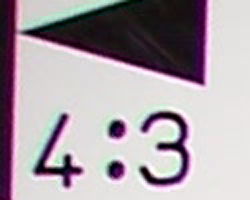 |
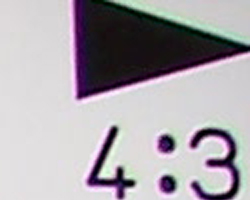 |
| Wide: Rather high (Top left @ 200%) |
Wide: Rather high (Top right @ 200%) |
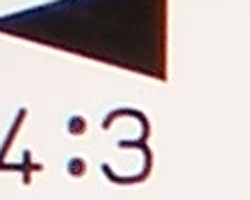 |
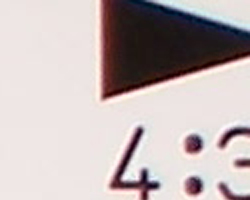 |
| Tele: Very little (Top left @200%) |
Tele: Almost none (Top right @200%) |
Chromatic aberration is rather high at wide angle, showing almost 10 pixels of very bright coloration on either side of the target lines. At telephoto, this distortion is much lower. (This distortion is visible as a very slight colored fringe around the objects at the edges of the field of view on the resolution target.)
Corner Sharpness
Significant softening in the lower corners of the frame, less in the top corners. Blurring doesn't extend too far into the frame though.
 |
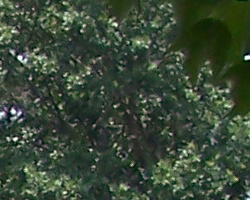 |
| Quite soft in the lower corners. | Better results in the top corners. |
The Kodak C360 produced soft corners in a few shots, the lower corners seeming to have the most visible effect. Fortunately though, the softness didn't extend too far into the frame.
Sensor
Exposure and White Balance
Indoors, incandescent lighting
Slight color casts with both Auto and Incandescent white balance settings, but better than average performance overall. Less exposure compensation required than usual.
| Auto White Balance +0.7 EV | Incandescent White Balance +0.3 EV |
Color balance indoors under incandescent lighting was just slightly warm in the Incandescent white balance mode, while the Auto setting resulted in a stronger pink cast. Both results were a fair bit better than average though. The Kodak C360 only required a +0.3 EV exposure boost to get a good exposure in the Incandescent mode (Auto needed +0.7 EV), much less than average for this shot. The color is just slightly dark here, making the blue flowers quite dark and slightly purplish. (A common outcome for this shot, given the very warm cast of the lighting used.) Our test lighting for this shot is a mixture of 60 and 100 watt household incandescent bulb, a pretty yellow light source, but a very common one in typical home settings here in the US. Overall, a better than average handling of this very tough light source.
Outdoors, daylight
Good color balance, very bright colors. Better than average exposure accuracy.
| Auto White Balance, +0.7 EV | Auto White Balance, Auto Exposure |
Outdoor shots were generally contrasty with blown out highlights if there were any bright subjects in direct sun. Shadow detail was also a little limited, but nothing that would raise an alarm for a consumer digicam. Exposure accuracy overall was quite good, the camera typically requiring less exposure compensation than we're accustomed to seeing with consumer digicams.
See full set of test images with explanations
See thumbnails of all test and gallery images
Resolution
High resolution, 1,100 lines of strong detail.
Our laboratory resolution chart revealed sharp, distinct line patterns down to about 1,100 lines per picture height, with extinction at around 1,600 lines. This is average or just slightly below average for a five-megapixel camera, capturing more than enough detail for 11x14 inch prints. (The camera did produce slight color artifacts at lower line frequencies though, visible in the full-sized res target shots.) Use these numbers to compare with other cameras of similar resolution, or use them to see just what higher resolution can mean in terms of potential detail. Beware that while you might be able to make out what looks like distinct lines at numbers higher than those we've mentioned here, the camera is just doing its best to continue interpreting the lines. If you zoom in and follow them from the wider portions, you'll see the lines converge and reappear several times, so the lines you see at 1,500 and higher are really only artifacts generated by the camera's imaging system.
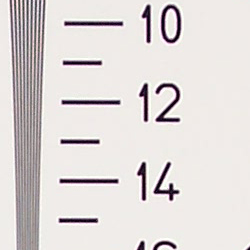 |
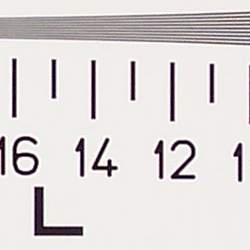 |
| Strong detail to 1,100 lines horizontal | Strong detail to 1,100 lines vertical |
See full set of test images with explanations
See thumbnails of all test and gallery images
Sharpness & Detail
Fairly sharp images, with some loss of detail from noise suppression.
The Kodak C360's images are reasonably sharp, without obvious over-sharpening on the camera's part. (Edge enhancement creates the illusion of sharpness by enhancing colors and tones right at the edge of a rapid transition in color or tone.)
Noise-suppression systems in digital cameras tend to flatten-out detail in areas of subtle contrast. The effects can often be seen in shots of human hair, where the individual strands are lost and an almost "watercolor" look appears. The crop at far right shows this, with lower-contrast areas of Marti's hair showing only limited detail, even though individual strands are quite visible against her cheek in the uncropped image. (Do note though, that the level of detail loss shown here isn't all that obvious on prints smaller than 8x10 inches though.)
ISO & Noise Performance
Moderate to moderately-high noise at the normal sensitivity settings, very high noise that blurs detail at the higher settings.
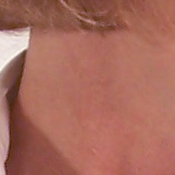 |
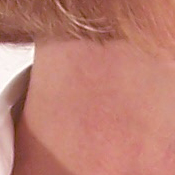 |
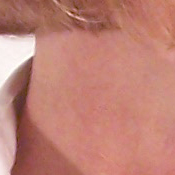 |
| ISO 80 | ISO 100 | ISO 200 |
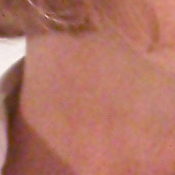 |
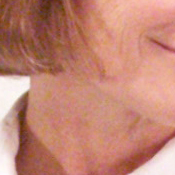 |
|
| ISO 400 | ISO 800 |
The Kodak C360's lower ISO settings did produce a little image noise, but it isn't too evident in prints. As the ISO setting increases though, so does the noise level as well as the loss of detail, and its images at ISO 400 are quite soft indeed. At ISO 800, noise is very high, with stronger blurring and brighter pixels. ISO 800 is available only at 1.8 megapixel resolution, because the camera combines several sensor pixels for every output pixel reduce noise levels. ISO 400 images are marginal but usable for 5x7 inch prints, ISO 800 ones are marginal even for 4x6 inch prints.
Extremes: Sunlit and low light tests
High resolution with good overall detail, though high contrast and limited shadow detail. Pretty good low-light performance, capable of capturing bright images under average city street lighting and slightly darker conditions.
| +0.3 EV | +0.7 EV | +1.3 EV |
Sunlight:
Because digital cameras are more like slide film than negative film (in that they tend to have a more limited tonal range), we test them in the harshest situations to see how they handle scenes with bright highlights and dark shadows, as well as what kind of sensitivity they have in low light. The shot above is designed to mimic the very harsh, contrasty effect of direct noonday sunlight, a very tough challenge for most digital cameras. (You can read details of this test here.)
The Kodak C360 had some trouble with the deliberately harsh lighting in the test above, producing very high contrast with blown highlights and deep shadows. Noise suppression is visible in the shadows, contributing to a loss of detail there. Though the exposure at +0.3 EV does preserve more highlight detail, overall exposure and Marti's skin tones look better with the +0.7 EV adjustment. (In "real life" though, be sure to use fill flash in situations like the one shown above. If possible, it's much better to shoot in the shade.)
| 1 fc 11 lux |
1/2 fc 5.5 lux |
1/4 fc 2.7 lux |
1/8 fc 1.3 lux |
1/16 fc 0.67 lux |
|
| ISO 80 |
2 sec f2.7 |
4 sec f2.7 |
8 sec f2.7 |
8 sec f2.7 |
8 sec f2.7 |
Low light:
Our low light testing showed that the Kodak EasyShare C360's capabilities in this area will be more than adequate for most consumers, provided they know to switch to the camera's Long Exposure mode for after-dark photography. (Long Exposure mode forces the ISO setting to 80 for minimum image noise, but permits shutter times as long as eight seconds.) The net result in Long Exposure mode was that our test images were bright as low as 1/4 foot-candle, which is about 1/4 as bright as average city street lighting at night. Color balance was slightly warm from the Auto white balance setting, but well within acceptable limits. The camera's autofocus system also worked down to the 1/4 foot-candle light level. Do keep in mind though, that the very long shutter times associated with Long Exposure mode absolutely demand the use of a tripod or other camera support to get sharp photos. (A useful trick is to just prop the camera on a convenient surface, and use its self-timer to release the shutter. This avoids any jiggling from your finger pressing the shutter button, and can work quite well when you don't have a tripod handy.)
Color
Saturation & Hue Accuracy
Slightly oversaturated color (especially reds and blues), very typical of consumer digital cameras. Generally good hue accuracy.
| In the diagram above, the squares show the original color, and the circles show the color that the camera captured. More saturated colors are located towards the periphery of the graph. Hue changes as you travel around the center. Thus, hue-accurate, highly saturated colors appear as lines radiating from the center. |
The other important part of color rendition is hue accuracy. Hue is "what color" the color is. Here, the Kodak C360 did unusually well. The only significant hue shift was to move cyans a bit closer to blue, a common and desirable tweak, making for better-looking sky colors.
Viewfinder
Coverage
Optical viewfinder is a bit tight, though the LCD monitor is quite accurate.
| 34mm eq., optical viewfinder | 102mm eq., optical viewfinder |
| 34mm eq., LCD monitor | 102mm eq., LCD monitor |
The C360's optical viewfinder was a little tight, showing only about 85% frame accuracy at wide angle and about 84% at telephoto. However, the LCD monitor showed 99% frame accuracy at both zoom settings, excellent by any measure.
Flash
Coverage and Range
The C360's small flash has a limited range and produces a slight blue cast in combination with typical incandescent room lighting. Our standard shots required much more exposure compensation than average.
| 34mm equivalent | 102mm equivalent |
| Normal Flash +1.7 EV |
Flash coverage was rather uneven at wide angle but very good at telephoto. In the Indoor test, the flash on the C360 underexposed our subject at its default setting, requiring a whopping +1.7 EV exposure compensation adjustment to get reasonably bright results. Even here, the exposure is just slightly dim, with a slight pink cast. (In flash mode, the exposure compensation adjustment seems to affect exposure from the background illumination, but not the flash itself.
| 8 ft | 9 ft | 10 ft | 11 ft | 12 ft | 13 ft | 14 ft |
1/90 sec f4.6 ISO 80 |
1/90 sec f4.6 ISO 80 |
1/90 sec f4.6 ISO 80 |
1/90 sec f4.6 ISO 80 |
1/90 sec f4.6 ISO 80 |
1/90 sec f4.6 ISO 80 |
1/90 sec f4.6 ISO 80 |
Even at eight feet, our closest test range, flash power was slightly weak. Kodak states the C360's flash range as a maximum of 11.8 feet, though I noticed reduced brightness from nine feet on.
Output Quality
Print Quality
Good print quality, great color, usable 11x14 inch prints. ISO 400 images are soft but usable at 5x7, ISO 800 shots are marginal even at 4x6.
Testing hundreds of digital cameras, we've found that you can only tell just so much about a camera's image quality by viewing its images on-screen. Ultimately, there's no substitute for printing a lot of images and examining them closely. For this reason, we now routinely print sample images from the cameras we test on our Canon i9900 studio printer, and on the Canon iP5000 here in the office. (See the Canon i9900 review for details on that model.)
With the Kodak EasyShare C360, we found that it had enough resolution to make good 8x10 inch prints. At 11x14, its prints were a bit softer looking, but probably adequate for wall or table display. At high ISO, image noise levels increase even while the images become softer from the anti-noise processing. ISO 200 photos look OK printed at 8x10 inches, but ISO 400 ones are marginal even at 5x7 inches (but look fine at 4x6). ISO 800 shots were marginal even at 4x6 inches, but it could be argued that a soft photo is better than one that's just too blurry from a slow shutter speed to see the subject clearly. Color-wise, the Kodak C360's images looked really great when printed on the i9900, with vibrant, accurate color. Most consumers will probably find the C360's colorful images very appealing.
Timing and Performance
Kodak C360 Timing
Good shutter response, somewhat slow shot to shot speeds.
| Startup/Shutdown: | |
| Power On to first shot | 4.1 seconds |
| Shutter response (Lag Time): | |
| Full Autofocus Wide |
0.53 second |
| Full Autofocus Tele |
0.80 second |
| Prefocused |
0.112 second |
| Cycle time (shot to shot) | |
| Normal large/fine JPEG | 2.34 seconds |
| Flash recycling | 4.5 seconds |
| Continuous mode | 0.5 second 2.0 frames/second (5 large/fine frames) |
| Download speed | |
| Windows Computer, USB 2.0 | 769 KBytes/sec |
The C360's performance ranges from quite fast to just average, depending on what you're trying to do. Start-up is a bit slow at 4.1 seconds, and the cycle times are lagging at 2.34 second for the highest image quality setting. Autofocus is faster than average at 0.53 second at wide angle, slowing to 0.80 second at telephoto. (Still slightly better than average.) If you "prefocus" the camera by half-pressing and holding down the shutter button before the final exposure though, it's much faster, with a shutter delay of only 0.112 second. Continuous-mode speed is decent, at two frames/second, for up to five shots in succession. The flash takes about 4.5 seconds to recharge after a full-power shot, about average for this class of camera. Connected to a computer, download speeds are fast enough that you probably won't feel a need for a separate card reader, but nonetheless aren't as fast as some cameras currently on the market. Bottom line, while not a first choice for sports or other fast-paced action, the C360 is responsive enough (particular at wide angle lens settings) to handle most family photo opportunities.
Battery and Storage Capacity
Battery
Moderate battery life with the LCD on, exceptional when LCD is switched off.
| |
|
| Still-image capture mode LCD on |
96 minutes |
| Still-image capture mode no LCD |
18.6 hours |
| Image playback |
228 minutes |
The Kodak EasyShare C360 uses a pair of AA cells for its power. The table above shows maximum run times based on our power measurements and a set of "standard" 1600 mAh NiMH rechargeable batteries. -- Times with modern high-capacity NiMH cells with capacities of 2100 mAh or higher could be proportionately longer, but I did find that the C360 was a little finicky about what NiMH cells it liked. (Stick with Kodak or another top brand for best results.) As always, I highly recommend purchasing a couple of sets of high-capacity NiMH batteries and a good-quality charger right along with the camera. Read my NiMH battery shootout page to see which batteries currently on the market are the best, and see my review of the Maha C-204W NiMH battery charger, my current favorite.
Storage
No card is included with the Kodak EasyShare C360, although it accepts SD/MMC cards; 32MB RAM is built into the camera.
| 32MB Internal Memory |
Fine | |
| 2,567 x 1,932 | Images | 17 |
| File Size | 1.6MB | |
| 2,304 x 1,728 | Images | 21 |
| File Size | 1.3MB | |
| 2,048 x 1,536 | Images | 27 |
| File Size | 1.1MB | |
| |
Images | 43 |
| File Size | 659K | |
I strongly recommend buying at least a 128MB memory card, to give yourself extra space for extended outings.
Conclusion
| Pro: | Con: |
|---|---|
|
|
| Free Photo Lessons | |
|
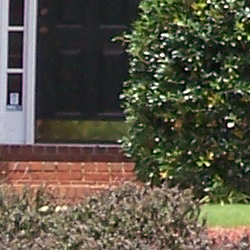


Follow Imaging Resource: